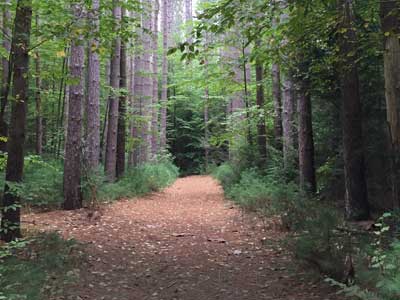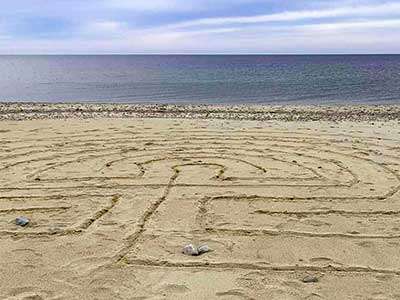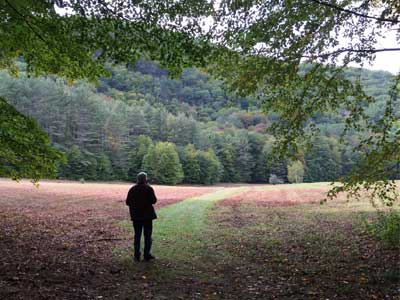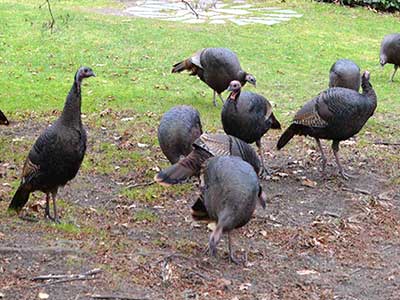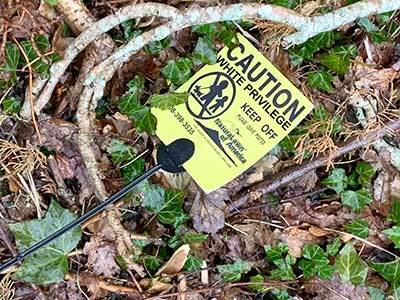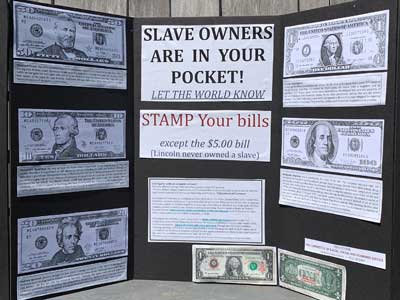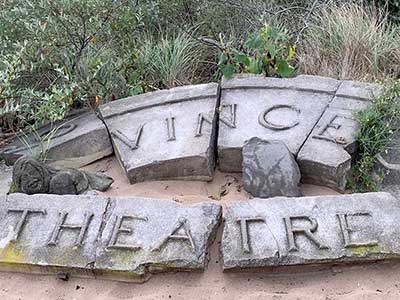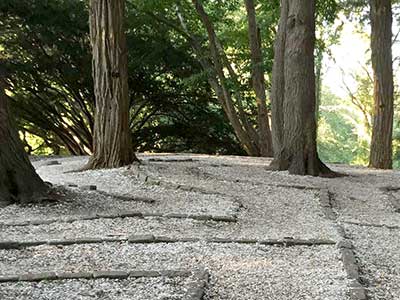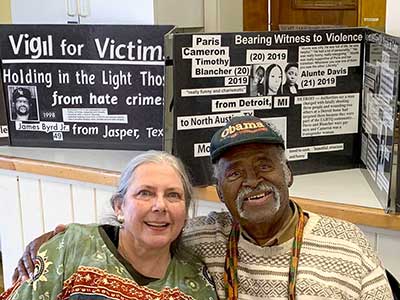by Grace Ebert | June 2020
When Adrian Brandon starts to color a portrait, he sets a timer. For his rendering of Breonna Taylor, the clock is set to 26 minutes—for George Floyd, 46 minutes, for Tony McDade, 38, and for Aiyana Stanley Jones, just seven. “When the alarm sounds, I am hit with a wave of emotions ranging from anger, to deep sadness, to hopelessness, to feeling lucky that I am still here,” he says. The Brooklyn-based artist is working on Stolen, a series of partially filled-in depictions of Black people murdered by police. Each portrait remains incomplete as Brandon only colors one minute for each year of the subject’s life before it was cut short. “Aside from being able to give the viewer a visual of the various ages affected by police violence, the timer creates a lot of anxiety for me as the artist,” he says, wondering, “’When is the timer going off?’ ‘Will I be able to finish this eye?’ ‘Damn, I haven’t even gotten to the lips yet.’”
TAGS: [Strategies] [2020’s] [Art & Culture] [Racial Terrorism] [Police Shootings] [Policing] [Systemic Racism] [Black Lives Matter] [Advocacy]
Resource Links Tagged with "Racial Terrorism"
The Crimson Klan
by Simon J. Levien | March 2021
When J. Max Bond Jr. ’55 entered Harvard at the age of 16, he was among 15 Black students in his class, most of whom lived in the north corner of Harvard Yard. As his freshman spring semester began, two other Harvard freshmen erected a wooden cross facing that corner of the Yard, formed by Stoughton and Holworthy Halls. And around midnight on Feb. 5, 1952, the students lit the cross on fire… Post-Harvard, Bond became one of a few prominent Black architects in the 20th century. After his death in 2009, his widow, Jean Carey Bond, released an 11-page retelling of his life. In it, Jean reveals that the University threatened Bond or any Black student with suspension should they go to the media with the cross burning. Bond, who graduated Phi Beta Kappa and finished undergrad in three years, was never suspended.
TAGS: [Racial Terrorism] [2020’s] [Systemic Racism] [Silencing POC] [White Supremacy] [White Culture] [White Privilege] [White Defensiveness] [History] [Slavery] [Denial] [Social Justice]
How Native Americans Were Vaccinated Against Smallpox, Then Pushed Off Their Land; Nearly Two Centuries Later, Many Tribes Remain Suspicious of the Drive to Get Them Vaccinated Against the Coronavirus
by Dana Hedgpeth | March 2021
More than 180 years ago, the federal government launched the largest effort of its kind in the United States to vaccinate Native Americans against the deadly disease of smallpox… In 1832, Congress passed legislation — the Indian Vaccination Act — that allowed the federal government to use about $17,000 to hire doctors to vaccinate Native Americans who were living near White frontier settlements. Many White settlers feared that Indians would spread the disease to them. “It wasn’t in the interest of Indian people,” said Pecos, who is also co-director of the Leadership Institute at the Santa Fe Indian School. “It was a way of vaccinating them to move them so White Americans could move them into Western lands.”
TAGS: [Strategies] [2020’s] [Indigenous] [Health Disparities] [Politics] [Social Justice] [Systemic Racism] [Racial Terrorism] [Definitions] [White Supremacy] [White Culture] [White Privilege] [Silencing POC] [History]
The Decline of Black Business; and What it Means for American Democracy
by Brian S. Feldman | May 2017
The last thirty years also have brought the wholesale collapse of black-owned independent businesses and financial institutions that once anchored black communities across the country. In 1985, sixty black-owned banks were providing financial services to their communities; today, just twenty-three remain. In eleven states that headquartered black-owned banks in 1994, not a single one is still in business. Of the fifty black-owned insurance companies that operated during the 1980s, today just two remain. Over the same period, tens of thousands of black-owned retail establishments and local service companies also have disappeared, having gone out of business or been acquired by larger companies. Reflecting these developments, working-age black Americans have become far less likely to be their own boss than in the 1990s.
TAGS: [Strategies] [2010’s] [Art & Culture] [Justice System] [History] [Economics] [Systemic Racism] [Black Lives Matter] [Social Justice] [Politics] [Slavery] [Civil War] [White Supremacy] [White Privilege] [Racial Covenants] [Racial Terrorism]
For White Allies on Black History and Slavery in the U.S.
(posted) by Paula M. Fitzgibbons | Date Unknown
Black history month is about so much more than slavery, but in the U.S., Black history and slavery are inseparable. And sadly, many of us still don’t have an adequate education on the topic. I’m always flabbergasted when I hear people say that Black Americans need to “get past” slavery. “It wasn’t us,” they say. “That happened hundreds of years ago. Get over it already.” It’s clear to me that these people don’t fully grasp the horror of American slavery, how long it lasted, and what happened after it. They also don’t seem to understand how severe trauma works.
TAGS: [Collective Action] [Slavery] [Black Lives Matter] [Systemic Racism] [White Fragility/Tears] [White Culture] [White Privilege] [White Defensiveness] [White Blindness] [Social Justice] [Racial Terrorism] [Silencing POC] [History] [Denial]
Why History Matters: the Legacy of Slavery
by David Rosen | January 2021
When recalling Lincoln, many New Yorkers may remember the famous speech he gave at Cooper Institute (aka Cooper Union) in February 1860 calling to limit the extension – but not the end – of slavery. It was a critical campaign speech that helped him secure the Republican Party nomination for President. In November, he was elected, and, in December, South Carolina was the first state to secede from the Union.
Unfortunately, few American – and likely very few New Yorkers – will recall that Lincoln’s speech was strongly attacked by city business leaders and the Democratic Party, many assailing him with the racist slogan, “Black Republican.” More important, Lincoln’s election sparked a strong movement in the city, led by Mayor Fernando Wood, to join the South and secede from the Union. This is one of the many important historical stories retold in an informative new book by Jonathan Daniel Wells, The Kidnapping Club: Wall Street, Slavery and Resistance on the Eve of the Civil War (Bold Type Books). Slavery was formally abolished in New York State in 1827, but the slave trade lived on in the city until the Civil War. Wells argues that the slave trade persisted in New York City in the decades before the Civil War because it was the capital of the Southern slave economy.
TAGS: [Strategies] [2020’s] [History] [Civil War] [Slavery] [Politics] [Social Justice] [Policing] [Black Lives Matter] [Justice System] [White Supremacy] [White Culture] [Silencing POC] [Racial Terrorism] [Social Justice]
Black Student Who Was Knocked Unconscious by Florida Officer Is ‘Traumatized’ and Seriously Injured, Family Says
by Zack Linly | February 2021
Last week, The Root reported that a Black high school student was body-slammed and knocked unconscious by a school resource officer at Liberty High School in Kissimmee, Fla. The Osceola County Sheriff’s Department said the officer was trying to stop a fight between her and another student, but video footage of the incident recorded by another student has since gone viral and has understandably raised questions about police use of force, the necessity of police officers on school grounds and, of course, racism. Those concerns are likely to be compounded now that the girl’s family is speaking out saying that she was “traumatized” by the incident and that she’s suffered serious injuries.
TAGS: [Racial Terrorism] [2020’s] [Policing] [Assumptions] [Systemic Racism] [Black Lives Matter] [White Defensiveness] [White Privilege] [White Culture] [White Supremacy]
Retracing Slavery’s Trail of Tears; America’s Forgotten Migration – the Journeys of a Million African-Americans from the Tobacco South to the Cotton South
by Edward Ball | November 2015
“My grandfather went to the folks who had owned our family and asked, ‘Do you have any documentation about our history during the slave days? We would like to see it, if possible.’ The man at the door, who I have to assume was from the slaveholding side, said, ‘Sure, we’ll give it to you.’ When Delores McQuinn was growing up, her father told her a story about a search for the family’s roots. He said his own father knew the name of the people who had enslaved their family in Virginia, knew where they lived—in the same house and on the same land—in Hanover County, among the rumpled hills north of Richmond.“The man went into his house and came back out with some papers in his hands. Now, whether the papers were trivial or actual plantation records, who knows? But he stood in the door, in front of my grandfather, and lit a match to the papers. ‘You want your history?’ he said. ‘Here it is.’ Watching the things burn. ‘Take the ashes and get off my land.’ “The intent was to keep that history buried,” McQuinn says today. “And I think something like that has happened over and again, symbolically.”
TAGS: [Racial Terrorism] [2010’s] [History] [Slavery] [Silencing POC] [Confederate Monuments] [Politics] [Black Lives Matter] [Definitions] [White Supremacy] [White Culture] [White Privilege] [Social Justice] [Civil War] [Accountability]
This Emmett Till Memorial Was Vandalized Again. And Again. And Again. Now, It’s Bulletproof.
by Kayla Epstein | October 2019
The cars came one by one, down a gravel road and through a cotton field, to the edge of the Tallahatchie River and the spot where, 64 years ago, historians believe Emmett Till’s lifeless body was pulled from the river. The vehicles carried Till’s relatives, including cousin the Rev. Wheeler Parker, community leaders and advocates dedicated to keeping his memory alive. The group had gathered on Saturday at noon in the remote spot near Glendora, Miss., to dedicate yet another memorial to Till. And this time, it was bulletproof. It took 50 years to get the first memorial to Till erected in Tallahatchie County, the site of the lynching that helped spark the civil rights movement. But then an entirely new battle began: keeping the tribute intact.
TAGS: [Racial Terrorism] [2010’s] [History] [Systemic Racism] [White Supremacy] [White Culture] [Social Justice] [Black Lives Matter] [White Privilege] [White Defensiveness]
The Violent History of White Supremacy Is Rarely Taught in Schools. It Should Be.
by Corey Mitchell | January 2021
Searing images from this month’s mostly white insurrection in Washington, D.C.—including a hangman’s noose on the Capitol grounds and the Confederate flag carried inside the U.S. Capitol—harken back to another era when both were tools and symbols of white supremacy across the country. But relatively few students have learned about previous sordid moments that foreshadowed this year’s efforts to instill terror and violently overturn an election such as the Wilmington Insurrection of 1898, widely thought to be the only successful coup in U.S. history, and the Tulsa Race Massacre.
TAGS: [Racial Terrorism] [2020’s] [History] [Social Justice] [Systemic Racism] [White Culture] [Slavery] [Politics] [Denial] [Silencing POC] [Teachers] [White Supremacy] [White Privilege] [White Blindness] [White Defensiveness] [Black Lives Matter]
Hypothetical Racism: The Trauma We Feel when White Terrorists Go Home and Innocent Black People are Shot on the Spot
by Taharee Jackson | January 2021
Hi. My name is Taharee Jackson, and I am suffering from HYPOTHETICAL RACISM.
I have not slept in two nights due to hypothetical racism-induced insomnia.
Allow me to explain. … Last night, on January 6, 2021, I was glued to the television, trying to see with my own eyes if the invasion of the United States Capitol by angry, White, gun-toting terrorists was actually happening. I kept waiting to see if throngs of police officers, special forces for insurrections, and National Guard members would show up in riot gear, handle them violently, spray rubber bullets, arrest them, shoot them, or even execute them on the spot. It happened. They did not. What truly kept me awake last night was my inability to identify the emotion I was feeling as a multiracial-mixed-with-Black woman watching the storming of the U.S. Capitol unfold WITHOUT CONSEQUENCE. Or, I should say, without the SAME consequences as the Antiracism and Black Lives Matter protests we just witnessed in all 50 states and the world over.
TAGS: [Assumptions] [2020’s] [Systemic Racism] [Accountability] [Black Lives Matter] [White Supremacy] [White Culture] [White Privilege] [Definitions] [Policing] [Indigenous] [Social Justice] [Politics] [Silencing POC] [Economics] [Denial] [Justice System] [Police Shootings] [Racial Terrorism] [History] [Anti-Racism]
‘A Missing Piece:’ Maine’s Connections to Slavery are Hidden in Plain Sight
*Paywall Alert
by Gilliam Graham | February Year Unknown
In July of 1750, a short notice appeared in a Boston newspaper calling for help finding an enslaved man who had run away from Ichabod Goodwin of Berwick in the province of Maine. Pompey was described as a short man of about 40 who spoke good English, wore a homespun jacket and checked shirt and had a cut ear. Fitted around his neck was an iron slave collar, a brutal device used by enslavers to identify and discipline the people they claimed as property. Goodwin, a blacksmith who offered a reward for Pompey’s return, likely made the collar himself. Notices like these of runaway slaves are among the few written documents that describe the reality and brutality of slavery in the early days of the Massachusetts Province of Maine. Largely left out of history books or minimized as an insignificant footnote, slavery remains a nearly hidden aspect of the history of Maine, a state better known as the home of abolitionists than enslavers or profiteers. However, reminders of Maine’s slavery connections linger in the coves, streets and other landmarks named for slaveholders who have been remembered instead for their contributions to shipbuilding, trade and establishing coastal towns.
TAGS: [Racial Terrorism] [Slavery] [Systemic Racism] [White Supremacy] [White Culture] [White Privilege] [Black Lives Matter] [History] [Social Justice]
Slavery and New York City; Confronting Our History to End the Narrative of White Supremacy
by Chuck Armstrong | February 2021
The Historical Society reports that during the colonial period of our country, 41 percent of households in New York City owned slaves, compared with 6 percent in Philly and 2 percent in Boston. “Only Charleston, South Carolina, rivaled New York in the extent to which slavery penetrated everyday life.” In a lot of ways, the life of the enslaved African in New York City looked different than in Charleston or elsewhere in the South; according to The New York African Free School, “Although New York had no sugar or rice plantations, there was plenty of backbreaking work for slaves throughout the state. Many households held only one or two slaves, which often meant arduous, lonely labor. Moreover, because of the cramped living spaces of New York City, it was extremely difficult to keep families together. It was not uncommon for owners to sell young mothers, because they did not want the noise and trouble of children in their small homes.”
TAGS: [Racial Terrorism] [2020’s] [White Supremacy] [History] [Slavery] [White Culture] [White Privilege] [Systemic Racism] [Anti-Racism] [Justice System] [Denial] [Racial Covenants] [Black Lives Matter]
8 Facts You Should Know about Racial Injustice in the Criminal Legal System; Racial discrimination Has Been Ingrained in the Criminal Legal System from Its Earliest Days and Persists Today.
by Daniele Selby | February 2021
The legacy of slavery, racist Jim Crow laws, and hateful lynchings has translated into modern-day mass incarceration and the disproportionate imprisonment of Black people. No where is that seen more clearly than in prisons like the Mississippi State Penitentiary — also known as Parchman Farm — and Louisiana’s Angola prison, which were built on and modeled after slave plantations and where several Innocence Project clients have been incarcerated. Racial discrimination and bias has been ingrained in the criminal legal and law enforcement system from its earliest days and continues to pervade every level of the system today. The Innocence Project, with your support, is committed to addressing these injustices. These eight statistics highlight the ways in which racial inequality persists in the criminal legal system today and contributes to wrongful conviction.
TAGS: [Strategies] [2020’s] [Slavery] [Justice System] [History] [Prison System] [Systemic Racism] [Social Justice] [Racial Bias] [Black Lives Matter] [Police Shootings] [Policing] [Accountability] [-ing While Black] [Racial Terrorism]
How to Use the Siri ‘I’m Getting Pulled Over’ Shortcut to Record Police Encounters During Traffic Stops with Your iPhone
*Share with POC you might know that might be of some help in keeping them safe
by Ennica Jacob | February 2021
Arizona resident Robert Petersen used this update to create his own third-party shortcut, initially known as “Police” and now known as “I’m Getting Pulled Over.” It aims to assist users during traffic stops by automatically recording their interactions with police officers. First developed in 2018, the shortcut activates the Do Not Disturb feature, turning off all incoming calls, messages, and notifications. This is to reduce the chance that a police officer will be startled by your phone ringing or flashing, and act aggressively. Next, it’ll send a text message with your current location to all the contacts that you’ve selected beforehand. At the same time, your phone will start recording a video with the front camera (i.e. the one above the phone’s screen).
TAGS: [Strategies] [2020’s] [Tips-Dos/Don’ts] [Accountability] [Policing] [-ing While Black] [Bystander Intervention] [Racial Terrorism]
The 1950s: Long Live the Lumbee
by Philip Gerard| July 2019
The Native Americans of Robeson County are strong and proud, but their history is marked by the struggle to overcome bias. In the 1950s, a watershed moment brings national attention to the Lumbee Tribe.
Through the early decades of the 20th century, the Lumbee Indians were not much known outside of Robeson County in the southeastern part of the state — though their forebears settled there by at least 1754, when an agent for colonial Gov. Arthur Dobbs discovered some 50 families living at the headwaters of the Little Pee Dee. His description was less than flattering: “a lawless People [who] possess the Lands without patent or paying quit rents.” Thus began a long history with white settlers during which the Lumbee struggled to gain respect.
TAGS: [Assumptions] [2010’s] [Indigenous] [History] [Implicit Bias] [Myths] [Politics] [Systemic Racism] [Denial] [White Supremacy] [Health Disparities] [Racial Terrorism] [Justice System]
Dec. 28, 1872: Skeleton Cave Massacre
by Zinn Education Project | Date Unknown
On Dec. 28, 1872, the Yavapai people’s shelter of Skeleton Cave, located in Salt River Canyon, Arizona, was attacked by Lieutenant Colonel George Crook and the 5th Cavalry. The army took up position around the mouth of Skeleton Cave. Surrounded, the Yavapai refused to surrender. The soldiers opened fire and dropped boulders on those who gathered at the mouth of the cave. Close to 100 Yavapai adults and children were massacred. This event has come to be known as the Battle of Salt River Canyon or the Skeleton Cave Massacre.
TAGS: [Racial Terrorism] [Indigenous] [History] [Systemic Racism] [White Supremacy] [White Culture]
There Is No Such Thing as a ‘White Ally’ — “TNSWA” Part I
by Catherine Pugh, Esq. | June 2020
The logic behind the expression “White Ally” makes about as much sense as me going into your room, folding your affirmations and putting them neatly away, cleaning all the introspection off of your mirror, gathering your feelings for the laundry, and then you pick up your golliwog, put it away, and announce triumphantly, “We’re in this together, and I am totally committed to helping.” Mmmm, not so much with that.
TAGS: [Individual Change] [2020’s] [White Fragility/Tears] [Racial Terrorism] [Black Lives Matter] [Systemic Racism] [White Culture] [White Privilege] [Cognitive Dissonance] [Social Justice] [“All Lives Matter”] [White Defensiveness] [White Culture] [White Supremacy] [White Blindness] [Accountability] [Policing] [-ing While Black] [Colorblindness] [Tips-Dos/Don’ts]
White Images, Black Reality: How to Talk to the Accidental Apologists for Monsters
by Earl Hazell | June 2020
We are now living in another one of those times in history when the majority of white people feel compelled to project all of their most deluded fantasies and deepest insecurities onto People of Color simultaneously, to avoid dealing with the systemic crisis they have created. As such, some of them are looking for any excuse to disrupt our communication with each other with a specific objective: to make themselves feel better by getting us to reestablish the sanctity of their illusions. How I ended an online conversation with several friends of mine that a white person entered recently—without invitation—is something that might be helpful to others who will inevitably find themselves in similar situations for some time to come. For some white people, particularly liberals , crisis does not begin when innocent people are ritualistically murdered . Crisis begins when ignorance is no longer bliss. When a lessor enlightened person of European descent elbows their way into one of your talks online, and passive/aggressively asks you to deny reality so you can comfort them, try telling them something like this: _____, the first thing you need to do is cop to the fact that your principle objective for coming into this conversation is to dominate it.
TAGS: [Individual Change] [2020’s] [Denial] [White Supremacy] [White Culture] [White Privilege] [History] [White Fragility/Tears] [White Blindness] [White Defensiveness] [Racial Terrorism] [Economics] [Silencing POC] [Systemic Racism] [Policing] [Slavery] [Reparations] [Black Lives Matter] [Indigenous] [Tips-Dos/Don’ts]
Denial Is the Heartbeat of America; When Have Americans Been Willing to Admit Who We Are?
by Ibram X. Kendi | January 2021
“Let me be very clear: The scenes of chaos at the Capitol do not reflect a true America. Do not represent who we are,” President-elect Joe Biden said during Wednesday’s siege. …To say that the attack on the U.S. Capitol is not who we are is to say that this is not part of us, not part of our politics, not part of our history. And to say that this is not part of America, American politics, and American history is a bald-faced denial. But the denial is normal. In the aftermath of catastrophes, when have Americans commonly admitted who we are? The heartbeat of America is denial. It is historic, this denial. Every American generation denies. America is establishing the freest democracy in the world, said the white people who secured their freedom during the 1770s and ’80s. America is the greatest democracy on Earth, said the property owners voting in the early 19th century. America is the beacon of democracy in world history, said the men who voted before the 1920s. America is the leading democracy in the world, said the non-incarcerated people who have voted throughout U.S. history in almost every state. America is the utmost democracy on the face of the Earth, said the primarily older and better-off and able-bodied people who are the likeliest to vote in the 21st century. America is the best democracy around, said the American people when it was harder for Black and Native and Latino people to vote in the 2020 election.
TAGS: [Assumptions] [2020’s] [Systemic Racism] [Black Lives Matter] [Indigenous] [Latino/a] [Denial] [History] [Politics] [White Defensiveness] [White Blindness] [White Privilege] [White Culture] [White Supremacy] [Slavery] [Civil War] [Racial Terrorism] [Policing] [Police Shootings] [Economics]
Black Police Officers Describe the Racist Attacks They Faced as They Protected the Capitol
by Emmanuel Felton | January 2021
The first glimpse of the deadly tragedy that was about to unfold came at 9 a.m. on the morning of the insurrection for one Black veteran of the US Capitol Police. But it didn’t come from his superiors — instead the officer had to rely on a screenshot from Instagram sent to him by a friend. … Management’s inaction left Black police officers especially vulnerable to a mob that had been whipped up by President Donald Trump, a man who has a record of inspiring racist vigilantes to action. One of the most defining videos of that day was of one of their colleagues, another Black officer, trying in vain to hold back the tide of rioters who had broken into the building and were hunting for Congressional members. BuzzFeed News spoke to two Black officers who described a harrowing day in which they were forced to endure racist abuse — including repeatedly being called the n-word — as they tried to do their job of protecting the Capitol building, and by extension the very functioning of American democracy. The officers said they were wrong-footed, fighting off an invading force that their managers had downplayed and not prepared them for. They had all been issued gas masks, for example, but management didn’t tell them to bring them in on the day. Capitol Police did not respond to BuzzFeed News’ request for comment about the allegations made by officers.
TAGS: [Racial Terrorism] [2020’s] [Systemic Racism] [White Supremacy] [White Culture] [White Privilege] [Politics] [Accountability] [Black Lives Matter] [Social Justice] [Policing] [-ing While Black]
Fatal Police Shootings of Unarmed Black People Reveal Troubling Patterns
by Cheryl W. Thompson | January 2021
Ronell Foster was riding his bicycle through the hushed streets of Vallejo, Calif., one evening when a police officer noticed that the bike had no lights and that he was weaving in and out of traffic. The officer, Ryan McMahon, went after Foster with lights flashing, siren blaring and the car’s spotlight pointed directly at him. Foster stopped. The pair exchanged words before Foster, who was on community supervision for a car theft conviction a month earlier, fled, eventually ditching the bicycle. McMahon caught up with Foster and jumped on top of him. The two struggled. McMahon, a rookie on the force, used a Taser on the father of two and struck him several times with his department-issued flashlight. Gunfire erupted — seven shots total. When it was over, Foster, 33, lay dying in the bushes in a darkened courtyard near an apartment complex.
TAGS: [Racial Terrorism] [2020’s] [-ing While Black] [Police Shootings] [Policing] [Systemic Racism] [White Supremacy] [White Culture] [Justice System] [Black Lives Matter] [White Defensiveness] [White Privilege] [Accountability] [Denial] [History]
The Pre-Civil War Fight Against White Supremacy; In a Country Driven by Racial Politics, Three Women Strove for a Just Society
by Dorothy Wickenden | January 2021
Two years into the cataclysmic war, Lincoln found a way to justify emancipation, as a “military necessity.” Frances greeted the proclamation with relief, but not euphoria. She was equally subdued when the Thirteenth Amendment eventually passed, on January 31, 1865, inscribing into the Constitution the eradication of slavery. Back in Auburn, she read the Herald Tribune’s report about the giddy scene in Washington. The visitors’ galleries were full, and senators and Supreme Court Justices squeezed onto the House floor. Finally, Speaker Schuyler Colfax stood and gavelled the room to order, announcing in a quavering voice that the ayes had a hundred and nineteen votes, the nays fifty-six. As Democrats looked on stonily, Republicans threw their hats in the air, cheering and roaring. Women in the gallery waved their handkerchiefs. Artillery at the Capitol fired a hundred-gun salute. The Tribune’s headline declared, “freedom triumphant. commencement of a new era. death of slavery.” It was a historic victory, but it had been won as much by political horse-trading as by deep principle. Henry and Lincoln, in a months-long backroom campaign, had lobbied wavering representatives with bribes and offers of jobs. And, Frances thought, it was too soon to celebrate. The amendment still had to be ratified by three-quarters of the states. Half a million men had died in the war, and it was not over. General William Tecumseh Sherman was moving through the Carolinas, and Ulysses S. Grant was eight months into his siege of Petersburg. There were rumors that rebels would attempt to assassinate the President. After reading about the joyous outpouring in the House, Frances wrote Henry a bracingly solemn note: “I congratulate you on the passage of the Constitutional amendment which I know you had much at heart. The prospect of abolishing slavery throughout the United States is indeed cheering.” The battle for equality had barely begun.
TAGS: [Assumptions] [2020’s] [Slavery] [Justice System] [Civil War] [History] [Politics] [White Supremacy] [White Culture] [White Privilege] [Systemic Racism] [Racial Terrorism] [Prison System] [Faith-Based/Spiritual] [Quaker]
How the Dawes Act Stole 90 Million Acres of Native American Land
by Dave Roos | January 2021
In the long, dark history of the United States government’s mistreatment of Native Americans, most people are familiar with the Trail of Tears, in which approximately 15,000 Native American men, women and children died during forced relocation from their tribal homelands in the American Southeast to Indian Territory in modern-day Oklahoma. But the theft of Native American tribal land didn’t stop with the Indian Removal Act of 1830 that authorized the Trail of Tears. Over the next century, Congress passed a series of laws that systematically stripped tribes of their lands, selling them to white settlers and corporations.
TAGS: [Racial Terrorism] [2020’s] [Indigenous] [History] [White Supremacy] [White Culture] [White Privilege] [Slavery] [Systemic Racism] [Politics] [Economics] [Implicit Bias] [Justice System] [Assumptions]
Enslaved Native Americans Played Central Role in 1600s New England Households
by Cecily Hilleary | January 2021
In 1614, six years before the Mayflower crossing, English explorer John Smith led two ships to survey the New England coast. As he described in his “Historie of New England,” Smith left shipmaster Thomas Hunt behind to fish and trade with the Natives. But Hunt saw an opportunity in another kind of trade: He kidnapped 27 Wampanoags and sailed to Spain, where he sold “these poor innocent souls” into slavery. … Slavery in America is usually associated with Africa and the American South. But Ohio State University historian Margaret Ellen Newell told VOA that up until 1700, Native Americans comprised the majority of slaves in America. “The first documented case was in 1605, when an English expedition captured four Wabanakis in what’s now Maine and brought them back to London,” Newell said. “The expedition was run by a man named Ferdinando Gorges, who hoped to establish a colony in northern New England and was looking for captives to use as guides and interpreters.” Since the start of their settlement, Puritan colonists sought Indians as indentured servants as a solution to labor shortages, she said.
TAGS: [Racial Terrorism] [2020’s] [Indigenous] [Slavery] [History] [White Supremacy] [White Culture] [White Privilege] [Systemic Racism] [Justice System] [Prison System]
Found Headstones Bring to Light Historic Injustice
by Gregory S. Schneider | October 2020
Richard and Lisa Stuart were walking beside the Potomac River when they noticed an odd rock in the riprap on the water’s edge. “I think that’s a headstone,” Richard Stuart remembers saying to his wife that day four years ago. Once they started looking, they saw another. And another. With horror, Stuart discovered that a two-mile stretch of erosion control along the riverfront farm he had just purchased was full of grave markers. A state senator, Stuart enlisted Virginia historians to figure out where they came from. The trail led upriver to the nation’s capital, and illuminated a dark truth about how Washington became the city it is today: The headstones were from Columbian Harmony Cemetery, a historic African American burial ground that was dug up and relocated in 1960 to make way for commercial development.
TAGS: [Racial Terrorism] [2020’s] [Systemic Racism] [Silencing POC] [White Supremacy] [White Culture] [White Blindness] [History] [Black Lives Matter] [Accountability]
The Brutish Museums by Dan Hicks Review – Return Everything; A Powerful Call for Western Museums to Return the Objects Looted in the Violent Days of Empire, During ‘World War Zero’
by Charlotte Lydia Riley | November 2020
The book is a vital call to action: part historical investigation, part manifesto, demanding the reader do away with the existing “brutish museums” of the title and find a new way for them to exist, not as sites of violence or trauma but as “sites of conscience”. Hicks is a curator at the Pitt Rivers Museum in Oxford, whose website says that it displays “archaeological and ethnographic materials from all parts of the world”. He focuses on one particular region – the kingdom of Benin, now located in modern Nigeria.
TAGS: [Assumptions] [2020’s] [History] [Art & Culture] [Systemic Racism] [Denial] [White Supremacy] [White Culture] [Racial Terrorism] [Economics] [Slavery] [Reparations]
The Violent Defense of White Male Supremacy; Trump and His Supporters Are Defending an America Where White Men Can Rule and Brutalize Without Consequence.
*Paywall Alert
by Ibram X. Kendi | September 2020
The violence of Chauvin and Rittenhouse bookended the summer of Trumpism. The three long, hot months from May 25 to August 25 compressed 413 years of American history into a cellphone video in which anyone could easily see the history for what it has always been: the violent “self-defense” of white male supremacy. Colonialism, capitalism, slavery and slave trading, Indian removal, manifest destiny, colonization, the Ku Klux Klan, Chinese exclusion, disenfranchisement, Jim Crow, eugenics, massive resistance, “law and order,” Islamophobia, family separation—all were done in the name of defending life or civilization or freedom.
TAGS: [Racial Terrorism] [2020’s] [Politics] [Systemic Racism] [White Supremacy] [History] [White Privilege] [White Culture] [Policing] [Police Shootings] [White Defensiveness] [White Blindness] [Health Disparities] [Justice System] [Black Lives Matter] [-ing While Black] [Accountability] [Indigenous] [Intersectionality]
George Floyd’s Autopsy and the Structural Gaslighting of America; The Weaponization of Medical Language Emboldened White Supremacy with the Authority of the White Coat. How Will We Stop It from Happening Again?
by Ann Crawford-Roberts, Sonya Shadravan, Jennifer Tsai, Nicolás E. Barceló, Allie Gips, Michael Mensah, Nichole Roxas, Alina Kung, Anna Darby, Naya Misa, Isabella Morton, Alice Shen | June 2020
The world was gaslit by misreporting about George Floyd’s initial autopsy report. As concerned physicians, we write to deconstruct the misinformation and condemn the ways this weaponization of medical language reinforced white supremacy at the torment of Black Americans. Gaslighting is a method of psychological manipulation employed to make a victim question their own sanity, particularly in scenarios where they are mistreated.
TAGS: [Racial Terrorism] [2020’s] [Black Lives Matter] [Systemic Racism] [Silencing POC] [Racial Covenants] [Policing] [White Supremacy] [White Culture] [White Privilege] [History] [Collective Action] [Police Shootings] [Denial] [Accountability] [Health Disparities] [Definitions]
For White Men Who Have Considered Genocide When Patriarchy and Privilege Are Not Enuf
by Mikol L. Clarke | November 2020
The cacophony of celebratory sounds that rang out last week in reaction to Joe Biden’s win was based on a sundry of emotions—ranging from relief at ending a racist regime dominated by white men who were fanatical about protecting their own wealth and privilege to jubilance over a historic win for Kamala Harris, the first woman and African American to be elected vice president. We were all celebrating our new white savior with a side of sister and new hopes that a brighter day was on the horizon. That day has not come just yet. The celebration only fueled the anger and resentment of a cadre of white men who’ve made it their dual mission in life to be both sycophants to a man in orange and to hinder any semblance of progress in this country. The days that followed Biden’s victory speech were riddled with egregious examples of toxic white masculinity.
TAGS: [Racial Terrorism] [2020’s] [Politics] [White Supremacy] [Systemic Racism] [White Privilege] [White Culture] [History] [Silencing POC] [Justice System] [Health Disparities]
